College Navigator Website Consumer Information Focus Groups 2011
Master Generic Plan for Customer Surveys and Focus Groups
College Navigator Focus Groups 2011 Attachments
College Navigator Website Consumer Information Focus Groups 2011
OMB: 1800-0011
Attachment I
Screeners
for Student and
Guidance Counselor Focus Groups
Consumer
Information Focus Groups on
College Navigator
Attachment 1
Student Screener
INTRODUCTION: Westat, a social science research company in Rockville, MD is working on a research project for the National Center for Education Statistics, U.S. Department of Education. They want to talk to students in a focus group about a specific college search website, and understand their experiences with conducting college searches. The focus groups will be recorded. We will perform a screening of potential participants that will take 4-5 minutes. Westat will prepare a report that does not single out any one person, but summarizes what they heard from all the individuals taken as a whole. In accordance with federal confidentiality requirements, we will keep the recording only until the report is finished. No names will be mentioned.
I will first need to ask you a few questions to determine if you are eligible to participate in the focus groups.
How old are you? _______________
Under 17 years old……………………………1 [TERMINATE SCREENER]
17 – 19 years old……………………………....2 [STUDENTS 17 YEARS OLD MUST HAVE THEIR PARENT SIGN THE PERMISSION FORM AND BRING A PHOTO ID – STUDENTS 18 OR OVER MUST SIGN CONSENT FORM OR PERMISSION FORM AND BRING PHOTO ID TO DISCUSSION GROUP TO VERIFY AGE. IF THEY DO NOT BRING A PHOTO ID, THEY CANNOT PARTICIPATE]
Older than 19 ………………………………….3 [TERMINATE SCREENER]
2. What grade are you currently in?
12th grade (graduating senior)………………..........................1 [CONTINUE]
11th grade (will be a senior in fall 2011) or below..................2 [TERMINATE SCREENER]
What high school did you graduate from and where is it located (city and state)?
Name of high school _________________________________________________
City/State _______________________________________
4. Have you been accepted into and are you planning to attend college in fall 2011?
Yes, have been accepted and am planning to attend……………....1 [SKIP TO Q6]
No, have not yet been accepted BUT am planning to attend……..2 [CONTINUE TO Q5]
No, have not been accepted and am not planning to attend............3 [TERMINATE]
Have been accepted but am NOT planning to attend......................4 [TERMINATE]
Have you conducted your college search yet? you conducted your college search yet?
Yes....................................................................1 [CONTINUE]
No.....................................................................2 [TERMINATE]
6. What
type of college are you planning to attend (i.e., 2-year,
4-year)?
2-year
college..................................................................................
1 [CONTINUE TO Q7]
4-year college.................................................................................. 2 [SKIP TO Q8]
Neither (e.g., student is pursuing a less than 2-year program)........ 3 [TERMINATE]
7. Will you be pursuing an associate’s degree or a certificate?
Associate’s degree……………………………..1 [SKIP TO Q9]
Certificate………………………………............2 [TERMINATE SCREENER]
8. What type of degree will you be pursuing?
Bachelor’s degree……………………………...1 [CONTINUE]
Associate’s degree…………………………......2 [TERMINATE SCREENER]
Certificate…………………………...................3 [TERMINATE SCREENER]
How many colleges did you consider in your search?
One…………………………………………….1 TERMINATE SCREENER]
Two or more………………..………………….2 [CONTINUE]
What is the name and location of the college you are planning to attend in fall 2011? [NOTE TO SHUGOLL: We would like to try to get a mix of colleges; we do not want too many students attending the same college.]
Name of college__________________________________________________________
City & state _____________________________________________________________
Which of the following best describes your current annual household income? (Circle one)
Annual Household Income |
Action |
Less than $40,000 annually |
1 [CONTINUE] |
$40,000 to $69,999 annually |
2 [CONTINUE] |
$70,000 to $89,999 annually |
3 [CONTINUE] |
$90,000 to $99,999 annually |
4 [CONTINUE] |
$100,000 or more annually |
5 [CONTINUE] |
12. Are you Hispanic or non-Hispanic?
(Circle one)
Hispanic or Latino………………….………………………………. 1 [CONTINUE]
Non-Hispanic or Latino ………………….………………………... 2 [CONTINUE]
13. Which of the following do you consider your race? You may choose one or more.
(Read categories to respondents. Circle all categories mentioned. Respondents may choose multiple categories.)
White ………………….…………………………………………… 1 [CONTINUE]
Black or African American ………………….…………………..… 2 [CONTINUE]
Asian ………………….…………………………………………… 3 [CONTINUE]
Native Hawaiian or Other Pacific Islander………………………… 4 [CONTINUE]
American Indian or Alaska Native ………………………………... 5 [CONTINUE]
IF GENDER NOT APPARENT BY NAME OR VOICE OF RESPONDENT, ASK THIS QUESTION:
14. Please confirm your gender as:
Female……………………………………………………………… 1
Male………………………………………………………………… 2
15. What is your name? __________________________________________________________
Consumer
Information Focus Groups on
College Navigator
Attachment 1
Guidance Counselor Screener
INTRODUCTION: Westat, a social science research company in Rockville, MD is working on a research project for the National Center for Education Statistics, U.S. Department of Education. They want to talk to high school counselors in a focus group to discuss information about a specific college search website, and understand your experiences with helping students conduct college searches. The focus groups will be recorded. We will perform a screening of potential participants that will take 4-5 minutes. Westat will prepare a report that does not single out any one person, but summarizes what they heard from all the individuals taken as a whole. In accordance with federal confidentiality requirements, we will keep the recording only until the report is finished. No names will be mentioned.
I will first need to ask you a few questions to determine if you are eligible to participate in the focus group.
Are you a guidance counselor at the high school level?
Yes…………….……………………..........................1 [CONTINUE]
No…………….……………………………...............2 [TERMINATE SCREENER]
2. At what type of high school do you work as a counselor (public, charter, private)?
Public…………….……………………......................1 [CONTINUE]
Charter…………….……………………………........2 [CONTINUE]
Private…………….…………………………….........3 [TERMINATE SCREENER]
Do you counsel students at your school who are planning to attend college?
Yes……………………………………………….1 [CONTINUE]
No………………………………………………..2 [TERMINATE SCREENER]
Including this school year, how long have you been counseling prospective college students?
Less than 3 years…………….…………………….1 [TERMINATE SCREENER]
3-6 years…………….……………………………..2 [CONTINUE]
7-9 years…………….……………………………..3 [CONTINUE]
10 years or more…………………………………...4 [CONTINUE]
About what percentage of your time is spent counseling prospective college students (working with high school students on conducting college searches, college choice, and the application process)?
_____________ percent [IF UNDER 25 PERCENT, TERMINATE SCREENER]
What is the highest degree you have received?
Bachelor’s degree or lower……………………………………...1 [TERMINATE SCREENER]
Master’s degree or higher……………………............................ 2 [CONTINUE]
7. In
what field did you earn a master’s degree?
__________________________________________________
[IF SCHOOL COUNSELING OR RELATED, CONTINUE TO Q8]
[IF OTHER THAN COUNSELING, CONTINUE TO Q8 BUT NOTE IT]
About what percentage of students in your school are low income?
____________ percent
What is the name of your high school and in what city/state is it located?
Name_____________________________________________________
City/state_____________________________________________________
IF GENDER NOT APPARENT BY NAME OR VOICE OF RESPONDENT, ASK THIS QUESTION:
10. Please confirm your gender as:
Female……………………………………………………………… 1
Male………………………………………………………………… 2
What is your name? ___________________________________________________
Attachment II
Recruitment Procedures and Related Materials
Recruitment Procedures
Consumer Information Recruitment Procedures
Description of Focus Group Recruitment Process
Recruitment by Focus Group Facility:
Westat has subcontracted with Shugoll Research, located in Bethesda, MD, to recruit students and guidance counselors for the three College Navigator focus groups. Shugoll, whom Westat has used successfully in the past, has extensive experience in recruiting both students of all ages and high school administrators. They send e-mails to past focus group participants maintained in their database to identify interested potential participants. Once they hear from participants, they use the screeners provided by Westat (see Attachment 1) to determine their eligibility.
The focus group participants will be selected that meet the following criteria:
Students:
Age 17-19
Graduating high school seniors who are planning to attend any 2-year or 4-year college in fall 2011 (this includes students who have conducted their college search and are planning to attend but have not yet been accepted)
Low to moderate income and above (majority of low to moderate income students if possible)
Considered two or more colleges in their search
Mixed race/ethnicity and gender
Guidance Counselors:
High school guidance counselor working in public or charter school in the DC metropolitan area with at least 3 years experience counseling prospective college students
Has an MA in counseling or related field. (NOTE: We will not terminate anyone who has an MA in a field unrelated to counseling, but we’d like to put them on a HOLD list)
At least one-fourth of counselor’s time spent working with high school students on college choice, search, and application process
Mix of counselors who work in schools where at least some (over 15 percent) of the students are low income
Goal: a mix of counselors from different high schools in DC, MD counties (Prince George’s, Montgomery, and Howard), and VA counties (Arlington, Fairfax) if possible
Goal: a mix of males and females from various racial/ethnic backgrounds
Shugoll then sends Westat weekly disposition sheets containing the key screener characteristics. If a potential participant does not meet the exact eligibility criteria described above or if there are too many eligible participants that attend (i.e., student) or work for (i.e., guidance counselors) the same high school, for example, we would ask Shugoll to place them on hold, and only invite them if we do not have enough eligible participants.
Advertisement:
Simultaneously, Shugoll advertises through their contacts at local schools in the DC metropolitan area by sending them Westat-developed fliers (seen next page). The flyers briefly describe the purpose of the research and details of participation, including the time commitment, incentive for participation, and contact information. The flyer will also describe the high school grade level requirements. Individuals who are interested in participating in the focus groups will be asked to contact Shugoll to complete the brief screening interview to determine eligibility as described above.
As needed, flyers will also be sent and distributed to contractor and client contacts in professional organizations, such as the National Association of College Admissions Counselors to recruit high school counselors and the Greater Washington College Information Center to recruit students from low-income families.
For each focus group, at least 12 participants will be recruited to ensure nine participants show up for each focus group.
Student Flyer
Are you a graduating high school senior?
You may be eligible to earn $50 by participating in a focus group to review and discuss a college information website.
About
the focus group:
Westat,
a social science research company, is conducting this focus group for
the National Center for Education Statistics (NCES) of the U.S.
Department of Education. During the 90-minute focus group, a
researcher will ask you questions about the meaning and usefulness of
types of information contained in a college search website.
Eligibility
to Participate:
You must be a graduating high school senior, ages 17-19
Have been accepted into and are planning to attend a
2-year or 4-year college in fall 2011Planning to pursue a bachelor’s or associate’s degree
Date: Tuesday, June 28, at 5:30 p.m. or 7:30 p.m.
Location: Shugoll Research (Bethesda, Maryland)
**If
interested, contact 301-215-7248 and reference Wendy**
Guidance Counselor Flyer
Are
you a high school guidance counselor?
You may be eligible to earn $75 by participating in a focus group to discuss a college search website.
A light meal will be provided.
About
the focus group:
Westat,
a social science research company, is conducting this 90-minute focus
group for the National Center for Education Statistics (NCES) of the
U.S. Department of Education. During the focus group, a researcher
will ask you to respond to questions about the meaning and usefulness
of information contained in a college search website.
Eligibility
to Participate:
You must work in a public high school in the DC metropolitan area
Spend part of your time working with high school students on college choice, search, and the application process
Date: Wednesday, June 29, at 5:30 p.m.
Location: Shugoll Research (Bethesda, Maryland)
**If interested, call 301-215-7248 and reference Wendy**
Confirmation E-Mails
Student Confirmation E-mail
SAMPLE CONFIRMATION E-MAIL FROM FOCUS GROUP FACILITY TO CONFIRMED STUDENTS
Shugoll Research
7475 Wisconsin Avenue, Suite 200
Bethesda, MD 20814
JOB#: WES0121JT
Thank you for your commitment to participate in this focus group discussion. Please reply to confirm receipt of this e-mail and your attendance.
Participants must arrive 15 minutes prior to your scheduled appointment time. If you are late we cannot guarantee that you will be used.
It is important that you keep this commitment as each individual attending a group has been selected specifically for this focus group. If you have any hesitation about your availability please call (301) 215-7248.
This focus group has been approved by the Office of Management and Budget (OMB# 1800-0011).
Participants will be required to:
Bring a photo ID with a birth date to the group.
(If under the age of 18); bring the consent form signed by your parents;
Read and sign a consent form agreeing to participate in the group and granting permission for it to be audio recorded.
Please note: The information obtained during the focus group will be combined with the responses of others in a summary report that does not identify you as an individual. The answers you provide in the group may be used only for statistical purposes and may not be disclosed, or used, in identifiable form for any other purpose except as required by law [Education Sciences Reform Act of 2002 (ESRA 2002) 20 U.S.C., § 9573]. After the summary report is finalized and the project is completed, the audiotapes will be destroyed.
You will receive $50 as a token of our appreciation
Directions
From the Capital Beltway:
Take the Wisconsin Avenue/MD-355 exit heading South toward Bethesda
Proceed 3.5 miles south on Wisconsin Avenue
We are on the corner of Wisconsin Avenue & East-West Highway
Via Metro:
Take the Red Line to the Bethesda stop. At the top of the long escalator, bear to the right and follow the tunnel to the lower level of our building the “Bethesda Crescent.” Take the escalator up to the lobby level. Enter through the glass doors in the lobby and take the lobby elevator to the 2nd floor. (If the lobby doors are locked, pick up the telephone marked “Shugoll Research” located to the right of the doors and wait for our answer.)
Parking: PLEASE PAY CLOSE ATTENTION TO PARKING INSTRUCTIONS
When turning onto Montgomery Avenue, parking is available at the first drive way on your left (Parking Garage with gate across from the police station). Also you can park at the Public Garage (Waverly Garage) one driveway up from the first gated garage on the left, located at the corner of Montgomery Avenue & Waverly Street. The Waverly Garage requires coins to park (nickels, dimes & quarters). There is short and long term parking for your convenience. If you are coming for a 2 hour group please make sure you park in a parking space that is longer than two (2) hours, the 3 plus hour parking is located on the third level and above. Parking is also available at the Air Rights Building on the corner of Waverly & Montgomery Avenue. Additional parking is available at the Hyatt on Wisconsin Avenue.
* * * * * PLEASE BE ADVISED, WE HAVE NO FACILITIES FOR CHILDCARE * * * *
* * * * * YOU MUST HAVE VALID IDENTIFICATION TO PARTICIPATE IN THE FOCUS GROUP* * * * *
*
Guidance Counselor Confirmation E-mail
SAMPLE CONFIRMATION E-MAIL FROM FOCUS GROUP FACILITY TO CONFIRMED GUIDANCE COUNSELORS
Shugoll Research
7475 Wisconsin Avenue, Suite 200
Bethesda, MD 20814
JOB#: WES0121JT
Thank you for your commitment to participate in this focus group discussion. Please reply to confirm receipt of this e-mail and your attendance.
Participants must arrive 15 minutes prior to your scheduled appointment time. If you are late we cannot guarantee that you will be used.
It is important that you keep this commitment as each individual attending a group has been selected specifically for this focus group. If you have any hesitation about your availability please call (301) 215-7248.
This focus group has been approved by the Office of Management and Budget (OMB# 1800-0011).
Participants will be required to:
Bring a photo ID with a birth date to the group.
Read and sign a consent form agreeing to participate in the group and granting permission for it to be audio recorded.
Please note: The information obtained during the focus group will be combined with the responses of others in a summary report that does not identify you as an individual. The answers you provide in the group may be used only for statistical purposes and may not be disclosed, or used, in identifiable form for any other purpose except as required by law [Education Sciences Reform Act of 2002 (ESRA 2002) 20 U.S.C., § 9573]. After the summary report is finalized and the project is completed, the audiotapes will be destroyed.
We look forward to seeing you Wednesday, June 29, 2011
The discussion will begin at 5:30 p.m.
The discussion will last approximately 1½ hours
The topic of the discussion is Education
You will receive $75 as a token of our appreciation
Directions
From the Capital Beltway:
Take the Wisconsin Avenue/MD-355 exit heading South toward Bethesda
Proceed 3.5 miles south on Wisconsin Avenue
We are on the corner of Wisconsin Avenue & East-West Highway
Via Metro:
Take the Red Line to the Bethesda stop. At the top of the long escalator, bear to the right and follow the tunnel to the lower level of our building the “Bethesda Crescent.” Take the escalator up to the lobby level. Enter through the glass doors in the lobby and take the lobby elevator to the 2nd floor. (If the lobby doors are locked, pick up the telephone marked “Shugoll Research” located to the right of the doors and wait for our answer.)
Parking: PLEASE PAY CLOSE ATTENTION TO PARKING INSTRUCTIONS
When turning onto Montgomery Avenue, parking is available at the first drive way on your left (Parking Garage with gate across from the police station). Also you can park at the Public Garage (Waverly Garage) one driveway up from the first gated garage on the left, located at the corner of Montgomery Avenue & Waverly Street. The Waverly Garage requires coins to park (nickels, dimes & quarters). There is short and long term parking for your convenience. If you are coming for a 2 hour group please make sure you park in a parking space that is longer than two (2) hours, the 3 plus hour parking is located on the third level and above. Parking is also available at the Air Rights Building on the corner of Waverly & Montgomery Avenue. Additional parking is available at the Hyatt on Wisconsin Avenue.
* * * * * PLEASE BE ADVISED, WE HAVE NO FACILITIES FOR CHILDCARE * * * *
* * * * * YOU MUST HAVE VALID IDENTIFICATION TO PARTICIPATE IN THE FOCUS GROUP* * * * *
*
Attachment III
Focus
Group Protocols
(Students and Counselors)
Student
Protocol
Attachment III
Consumer Information Focus Groups
College Navigator Protocol for Four-Year and Two-Year Students
Rev. June 3, 2011
Welcome
Good evening. My name is Keith and I am a researcher at Westat. I will moderate tonight’s focus group. Thank you for taking time to participate in the group. First, let me tell you about the purpose of this study.
Introduction to the Study
Westat, a social science research company in Rockville, MD, is working with the U.S. Department of Education on a project to help students and their families search for colleges. Most of the discussion will focus on reviewing and discussing specific information currently on the College Navigator website developed by the U.S. Dept. of Education. Tonight, we will review a potential new addition to that website that is aimed at making the information more accessible.
The U.S. Dept. of Education would like to hear from consumers, like you, to determine if the information is helpful in your college search process and easy to understand and use. The information you share will be used by the Dept. of Education to help students search for and compare information about different colleges and universities as one of the first steps in their college search process.
Focus Group Guidelines
There are no right or wrong answers. We invite and value a variety of opinions and experiences.
Information shared in group will remain confidential; the report from this study will only summarize the responses and not identify you by name or school. Help us protect your confidentiality by only stating your first name and NOT mentioning the name of your school.
Explain about one-way mirror and disclose that staff from Dept. of ED and Westat are observing and taking notes on the discussion behind one-way mirror and that the session will be audio recorded.
Turn off cell phones/Blackberries, etc. or turn them to vibrate.
Any questions before we begin?
Warm-Up and Opening Questions
OK, let’s get started by going around the table and introducing ourselves. Please give your first name only and tell me your favorite academic subject thus far and what you like about it [or some other equally easy question to get the group warmed up and give everyone a chance to share].
What is the first thing that comes to mind when you think about your college search experience?
Probe: Ask what makes them say this or tell me more about this.
Approach to college search process / experience
[Spend about 15-20 minutes on this section]
When did you first begin looking for schools/colleges?
Did you use the Internet to conduct your college search? If so, what websites or on-line search tools did you use?
3a. Probe on aggregator sites vs. individual college websites?
3b. What sites did you prefer and what was it about them that you liked?
What types of information were important for you in your search?
[Probe if not mentioned..:
Admissions requirements (e.g., SAT/ACT scores, GPA)
cost (tuition, net cost, financial aid, etc.)
geographic location
type of program, degree offered
school type (2-year, 4-year; public/private; special interest)
reputation of school (probe on how determined—graduation rates, retention rates)
diversity of student body
graduation rates (if not mentioned earlier)
Other
How many schools did you consider?
5a. How did you narrow down the list of colleges you applied to?
[Probe on the criteria/information they used.]
5b. What in particular made you choose the college or university that you plan to attend?
PROFILE REVIEW
Thank you very much. For the remainder of the discussion, we will focus our attention on reviewing draft screen shots of a few web pages that could potentially be added to the College Navigator website.
In this exercise we will be using real information about the University of California at Berkeley for our discussion. This institution was randomly selected. There is nothing special or significant about our use of it. [NOTE: for the 2-year college group, we will use a comparable 2 year college example from Salem Community College. The only difference is the first category is “About Tuition and Fees” rather than “About Undergraduate Admissions.”We will also modify the specific data elements for 2-year colleges based on the items to be discussed and ranked in each category.] I will be highlighting a subset of information that is available on College Navigator that we are calling a College Profile. To be most useful, a College Profile should be selective in the information it presents so it is manageable but provides enough information to allow you to make informed comparisons across colleges. We need your help in determining if the selected information is the most useful information.
I will ask you specific questions about each of the selected categories of information. At the end of the discussion, you will be asked to rank the categories you might use to compare institutions. Our purpose is to learn from you what information is most important and useful to you. For some categories of information, College Navigator has much more information that could be displayed. This additional information would be available on College Navigator when you click the links for more information. Our goal is to learn from you what information you would want most as a “first look” at a college or university, and if the College Profile we look at today meets that requirement for you. We also want to learn from you if the College Profile is enticing enough for you to use College Navigator in your college search.
[Moderator displays and describes the home page of the College Navigator screen shots to build familiarity with the site. Remind respondents that the Profile contains 7 separate categories and that we will discuss them one-by one. Display the home page showing export feature and side-by-side comparison feature. Moderator then shows screen shots of the profile using the appropriate college (2 year or 4 year) information.
OK, let’s start by looking at the first category entitled, About University of California-Berkeley. You can see that some basic information is provided here: type of school (4-year) and that it’s a public university located in Berkeley, CA
Do you know the difference between a public and private university?
What is the difference between a private for-profit and a private not-for-profit institution?
Can you name one of each: a public institution; a private not-for-profit institution; and a private for-profit institution?
How important is this information?(i.e., very important, important, somewhat important, or not important at all?)
How important is it for you to know that this is a 4-year institution (as opposed to a 2-year or less-than 2-year institution?) What is the difference? Can you name a 4-year institution and a 2-year institution?
You will notice that there is a link to more information on accreditation provided here. What does accreditation mean to you?
How would you use accreditation information in your college search process? Would you click on this link?
How important is accreditation to you in comparing colleges (i.e., very important, important, somewhat important, or not important at all)?
Is there any other basic information not appearing here that you would like to see included?
About Undergraduate Admissions
What does this chart mean to you? (Allow time for responses)
In this example, 48,682 students applied in the Fall of 2010. 10,710 were admitted. What, if anything, does this tell you about this school?
Probe: Would this be easier to understand if they were rates(percentages) rather than numbers?
You see also that of the 10,710 who were admitted, 4,391 enrolled. What do you think this information means?
What are the differences among applied, admitted, and enrolled students? How would you use this information?
How important is this information to you in comparing colleges? (Very important, important, somewhat important, not important)
The College Navigator site contains additional information about undergraduate admissions that does not appear on the profile, including a summary of application requirements and ACT and SAT test scores for enrolled first time students. [Show the screen shots of applicants, percent admitted, and percent enrolled, ACT/SAT test score ranges for enrolled students, and admissions requirements.]We want to be sure that we selected the most important “first look” information to include in the College Profile. Again, all the information will be available on College Navigator. The question is really which among them is most important to include in a short profile of an institution.
Do you have questions about ACT/SAT test score ranges? What do the percentiles mean?
Do you have questions or comments about any of these “additional” items on admissions?
So before we move to the next category, we will do a ranking exercise. We will do this for each category we discuss. I would like you to take a look at the screen shots again. On the form I am passing around, I want you to please mark with an “X” the most important piece of information within this category, About Undergraduate Admissions, that would most affect your decision to consider, apply to or enroll in a particular college.
Now let’s look at the information provided About Student Financial Aid.
What is your first reaction to this table? (Allow responses)
If they say “confusing” or “too cluttered,” ask what about it is confusing?
If they say there’s too much information, ask which information is most important?
Ask someone to “interpret” the chart.
Are the various categories of grants and loans clear? For example, what type of grant is a Pell Grant?
How many of you know the difference between grants and scholarships and student loan aid? What are these differences?
Do you understand the difference between federal student loans and other student loans?
Is there anything you would like to change about this chart? If so, what?
How would you use this information in your college search process? How would you use it to compare colleges?
How important is this information to you in comparing colleges?
(Very important, important, somewhat important, not important)
Would you want to click on the link for more information?
Now, let’s look briefly at one additional item that is not included in the College Profile under “About Financial Aid.” Please look at the screen shot which also presents information on financial aid
Is it clear what the differences are between this graph and the one presented in the Profile? (e.g., all undergraduates as opposed to beginning students; level of detail provided)
Now, please use your ranking sheet to mark with an “X” by the one most important piece of information within this category of Student Financial Aid, that is most important to you as a “first look” at the institution.
The next table is About the Estimated Student Expenses before and after Grant and Scholarship Aid
Please look at this chart and tell me what questions, if any, come to mind when first looking at this. (Allow responses)
Is it clear that these are expenses for “in-state” as opposed to out of state students? What does that mean? Why does it matter?
This table presents both Estimated price of attendance before aid and Average price of attendance after grants and scholarships. What do you think is the difference between these two prices?
Is it helpful to have this information for multiple years? Are there too many or too few years represented? What does the presentation of multiple years of information tell you?
What would you like to change in this chart, if anything?
How important is this information to you in comparing colleges?
(Very important, important, somewhat important, not important)
How would you use this information in your college search process? How would you use it to compare colleges?
Would you want to click on the link for more information?
The College Navigator site contains additional information about student expenses before grant aid and more information about student expenses after grant aid (net price). Let’s look at an example of each:
Before grant aid: College Navigator contains estimated expenses for students by different living options—this one shows on, off-campus expenses.)
Is this information clear? How might you use this information?
Now, I would like you to take a look at the screen shots again and please mark with an “X” the most important piece of information within this category, “Estimated Student Expenses Before Grant Aid,” that would most affect your decision to apply to or enroll in a particular college.
After grant aid: The second graph in the next screen shot shows average net price broken down by income level of undergraduates who received financial aid.
Is this information clear to you? How might prospective students use this information?
Please take a look at the screen shots again and please mark with an “X” the most important piece of information within this category, within this category, “Estimated Student Expenses After Grant Aid,” that is most important to you as a “first look” at the institution.
Next we will look at two graphs under the heading About the Undergraduate Students
Undergraduate Student Characteristics (Includes % of full-time, part-time students; percentage of students by gender, and by in-state and transfer in)
Is this graph clear to you? (Allow responses)
Are these the student characteristics that are meaningful to you? Which ones are, which ones are not and why?
How would you use this information in your college search process? How would you use it to compare colleges?
How important is this information to you in comparing colleges?
(Very important, important, somewhat important, not important)
Let’s look at another graph under the heading About the Undergraduate Students.
Undergraduate Race and Ethnicity Diversity
What does this graph mean to you? (Allow responses)
How many undergraduate students attend this university?
What is your reaction to how the data are presented?
What does this tell you about the institution?
How would you use this information in your college search process? How would you use it to compare colleges?
Would you want to click on the link for more information?
How important is this information to you in comparing colleges? (Very important, important, somewhat important, not important
Now, I would like you to take a look at the screen shots again and please mark with an “X” the one that is most important to you as a “first look” at the institution. Please note that if you mark the broader sub-category of Student Characteristics, please rank the importance of each one on a scale of 1-6. If you do not mark this category (i.e., student characteristics), you will not need to rank these items.
.
Now we will look at two graphs under the heading About Undergraduate Persistence and Success
Undergraduate Student Persistence and Success
Starting with the first table on the left, “Percentage of Students Who Began Their Studies in the Fall 2008 and Returned in Fall 2009,” what does this chart mean to you? Probe if they say it’s confusing as labeled; If this had been labeled “First-year Retention Rate,” would you know what that means?
How would you use this information in your college search process? How would you use it to compare colleges?
How important is this information to you in comparing colleges? (Very important, important, somewhat important, not important)
Now, let’s look at the next chart, “Percentage of Students Who Began Their Studies in Fall 2000 and Graduated Within… 4, 6 or 8 years.”
How would you describe what this chart is conveying? [Probe if they say it’s confusing as labeled;]
If this had been labeled “Graduation Rate,” would you know what that means?
How do you interpret the information on percentage who graduated within 4, 6 and 8 years?
How would you use this information in your college search process? How would you use it to compare colleges?
How important is this information to you in comparing colleges? (Very important, important, somewhat important, not important)
In addition to this information in the Profile, College Navigator contains more information about student persistence and success. We have no screen shots to show you, but the information includes the following: graduation rates by race/ethnicity (second chart on profiles broken out by racial/ethnic group) and transfer out rates.
Can you think of any reasons you might want to know about graduation rates by race/ethnicity? If so, what?
Is it clear what transfer-out rates represent? What do you think it means?
Please mark with an “X” the most important piece of information within this category of Student Persistence and Success that is most important to you as a “first look” at the institution.
Now let’s look at two graphs About Degrees and Certificates Awarded to Students.
About Degrees and Certificates Awarded to Students
What does this graph tell you? (Allow responses)
How would you use this information in your college search process? How would you use it to compare colleges?
How important is this information to you in comparing colleges? (Very important, important, somewhat important, not important)
And now, turning to the final table, you’ll see the Largest Areas of Bachelor’s Degrees in 2008-09.
What is your first reaction to this information?
How important is this information to you in comparing colleges?
(Very important, important, somewhat important, not important)
How would you use this information in your college search process? How would you use it to compare colleges?
Again, in addition to this information in the Profile, College Navigator contains more information about degrees and certificates awarded. A few examples of what is provided here are information about areas of study by gender and information about areas of study by race/ethnicity.
Do you have any examples how a prospective student might use this information?
Is it of interest to you or not?
Now, please mark with an “X” the most important piece of information within this category, Degrees and Certificates Awarded to Students, that is most important to you as a “first look” at the institution.
OK, now looking at these pages of the College Profile together, how does this format work for you?
Visually, how do you like this format?
Are the charts easy to understand?
What about the seven categories (restate these if necessary)—do they make sense to you? Are these the right titles for the categories of information given the type of information being provided in them?
Is this the right amount of information? Given all the information we discussed today, do you now feel that you would want more or less of the information when searching on a college?
Do you have any suggestions to improve the way the information is presented?
As a final opportunity to get your input on information that might be available in a Profile on the College Navigator website, we would like you to rank the overall categories in order of importance. You’ve already ranked the information within each category, but now we’re interested in your ranking the broader categories.
[Moderator distributes overall ranking sheets.]
On the form I am passing around, I want you to please identify the most important piece of information within each of the six categories (Admissions, Financial Aid, Estimated student expenses before and after grant and scholarship aid, about Undergraduate Students, Student Persistence and Success, and Degrees and Certificates Awarded to Students) that would most affect your decision whether or not to apply to and enroll in a college.
Thank you. Now let’s wrap up by inviting any suggestions for other information you or students like you might want to know when searching for and applying to colleges.
Is there any information you would like the Department of Education to provide on this profile that we haven’t already discussed?
Remind respondents about the 7 categories.
Are there any other suggestions or topics we have not discussed about the web page or your experiences from your college search that you would like to bring up now?
24.. Based on your experience with the College Navigator website today, would you recommend it to a friend who is trying to decide about what college to go to? What makes you say that?
False Close
Thank you so much for being here tonight. Before we conclude, I need to step out for a few minutes to make sure we have everything ready for you.
Moderator checks with observers for up to two additional questions to pose, time permitting.
Final Close
Upon return, moderator will pose questions from observers, if any.
Well, that concludes our discussion for tonight. Again, thank you so much for taking time out of your very busy lives to be here with us tonight. The facility has your envelope ready for you. Please enjoy the rest of your evening and travel home safely.
Counselor
Protocol
Attachment III
Consumer Information Focus Groups
College Navigator Protocol for Guidance Counselors
Rev. June 2, 2011
Welcome
Good evening. My name is Keith and I am a researcher at Westat. I will moderate tonight’s focus group. Thank you for taking time to participate in the group. First, let me tell you about the purpose of this study.
Introduction to the Study
Westat, a social science research company in Rockville, MD, is working with the U.S. Department of Education on a project to help students, their families, and other consumers such as high school guidance counselors search for colleges. Most of the discussion will focus on reviewing and discussing specific information currently on the College Navigator website developed by the U.S. Dept. of Education. Tonight, we will review a potential new addition to that website that is aimed at making the information more accessible.
The U.S. Dept. of Education would like to hear from you to determine whether the information provided in this new addition to the website is helpful to students and you, and easy to understand and apply. The information you share will be used by the Dept. of Education to help students, parents, and counselors search for and compare information about different colleges and universities as one of the first steps in their college search process.
Focus Group Guidelines
There are no right or wrong answers. We invite and value a variety of opinions and experiences.
Information shared in group will remain confidential; the report from this study will only summarize the responses and not identify you by name or school. Help us protect your confidentiality by only stating your first name and NOT mentioning the name of your school.
Explain about one-way mirror and disclose that staff from Dept. of ED and Westat are observing and taking notes on the discussion behind one-way mirror and that the session will be audio recorded.
Turn off cell phones/Blackberries, etc. or turn them to vibrate.
Any questions before we begin?
Warm-Up and Opening Questions
OK, let’s get started by going around the table and introducing ourselves. Please give your first name only and tell me how long you’ve been a counselor, about how many students are enrolled in your school, and how many guidance counselors work in your high school? Do not mention the name of your school or its location.
Based on your experience, when are your students most often introduced to the idea of going to college? By whom? [Probe: you, a teacher, parent, relative, friend]
Approach to college search process / experience
[Spend about 15-20 minutes on this section]
Generally, what do you do to help your students with the college search and selection process?
[Probe: Help them generally search for colleges? Broaden or narrow their search? Help them with admissions/ application process, financial aid/scholarship information?]
What specific types of information do your students ask about when conducting their college search?
Probe on:
admissions process/requirements (application deadlines, essays)
academics (major, academic rigor);
cost (e.g., cost (tuition, net cost, financial aid, etc.)
geographic location
type of program, degree offered
school type (2-year, 4-year; public/private; special interest)
reputation of school (probe on how determined—graduation rates, retention rates)
diversity of student body
graduation rates (if not mentioned earlier)
Other
What specific type of information should your students pay more attention to when searching for colleges? What makes you say that?
5. To what degree would you say you rely on the Internet to help students conduct college searches? To what degree do your students rely on the Internet to search for colleges? What websites or on-line search tools do you/they use?
5a. Probe on aggregator sites vs. individual college websites?
5b. What sites did you prefer and what was it about them that you liked?
5c. Have you heard of College Navigator tool developed by the U.S. Dept. of Education?
PROFILE REVIEW
Thank you very much. For the remainder of the discussion, we will focus our attention on reviewing draft screen shots of a few web pages that could potentially be added to ED’s College Navigator website.
In this exercise we will be using real information about the University of California at Berkeley for our discussion. . This institution was randomly selected. There is nothing special or significant about our use of it. I will highlight a subset of information that is available on College Navigator that we are calling a College Profile. To be most useful, a College Profile should be selective in the information it presents so it is manageable but provides enough information to allow you to make informed comparisons across colleges. We need your help in determining if the selected information is the most useful information from your perspective as a guidance counselor.
I will ask you specific questions about each of the selected categories of information. At the end of the discussion, you will be asked to rank the categories you might use to help students compare institutions. Our purpose is to learn from you what information is most important and useful to students. For some categories of information, College Navigator has much more information that could be displayed. This additional information would be available on College Navigator when you click the links for more information. Our goal is to learn from you what information you would want most and if the College Profile we look at today meets that requirement for you. We also want to learn from you if the College Profile is enticing enough for you and your students to return to College Navigator for additional information.
[Moderator displays and describes the home page of the College Navigator screen shots to build familiarity with the site. Remind respondents that the Profile contains 7 separate categories and that we will discuss them one-by one. Display the home page showing export feature and side-by-side comparison feature. Moderator then shows screen shots of the profile using the appropriate college (2 year or 4 year) information.
OK, let’s start by looking at the first category entitled, About University of California-Berkeley. You can see that some basic information is provided here: type of school (4-year) and that it’s a public university located in Berkeley, CA
Do you think your students know the difference between a public and private university? Would they know difference between a private for-profit and a private not-for-profit institution?
How important do you think this information should be to students? i.e., very important, important, somewhat important, or not important at all?)
How important is it for students to know that this is a 4-year institution (as opposed to a 2-year or less-than 2-year institution?)
You will notice that there is a link to more information on accreditation provided here.
How important is accreditation for use in comparing colleges? Do students understand what it means? Would you encourage them to click on this link?
Is there any other basic information not appearing here that you would like to see included?
About Undergraduate Admissions
Please review this chart. (Allow time for responses)
As you can see, this chart compares the number of students who applied, were admitted and enrolled in the Fall 2010. Is this a chart you think students would understand? Would this be easier, harder, or does it make any difference for students to understand this chart if they were rates rather than numbers?
How important is this information to you in comparing colleges?
(Very important, important, somewhat important, not important)
How would you use this information with students?
The College Navigator site contains additional information about undergraduate admissions that does not appear on the profile, including a summary of application requirements and ACT and SAT test scores for enrolled first time students. [Show the screen shots of applicants, percent admitted, and percent enrolled, ACT/SAT test score ranges for enrolled students, and admissions requirements.]We want to be sure that we selected the most important “first look” information to include in the College Profile. Again, all the information will be available on College Navigator. The question is really which among them is most important to include in a short profile of an institution that is informative and useful for comparing colleges.
How would you explain the ACT/SAT test score ranges to your students?
Do you have questions or comments about any of these additional items on admissions?
Before we move to the next category, we will do a ranking exercise. We will do this for each category we discuss. I would like you to take a look at the screen shots again. On the form I am passing around, I want you to please mark with an “X” the one most important piece of information within this category, About Undergraduate Admissions, that students should consider in, applying to or enrolling in a particular college.
Now let’s look at the information provided About Student Financial Aid.
What do you think would be your students’ reactions to this table? (Allow responses)
If they say “confusing” or “too cluttered,” ask what about it is confusing?
If they say there’s too much information, ask which information is most important?
Would you use this table when talking to students about financial aid? If so, how would you use it?
Can the chart stand alone for students to accurately interpret on their own, or do you think they would need someone like you to help them understand it? What makes you say that?
Would students understand the difference between grants and loans? For example, would they know a Pell Grant is?
Is there anything you would like to change about this chart? If so, what?
How important is this information to you and your students in comparing colleges?
(Very important, important, somewhat important, not important)
Would you want to click on the link for more information?
Now, let’s look briefly at one additional item that is not included in the College Profile under “About Financial Aid.” Please look at the screen shot which also presents information on financial aid
Is it clear what the differences are between this graph and the one presented in the Profile? (e.g., all undergraduates as opposed to beginning students; level of detail provided)
Any other comments or questions about this table regarding how you might use it?
Now, please use your ranking sheet to mark with an “X” by the one most important piece of information within this category of Student Financial Aid that students should consider in, applying to or enrolling in a particular college.
The next table is About the Estimated Student Expenses. This table presents both Estimated price of attendance before aid and Average price of attendance after grants and scholarships.
Do you think students would accurately interpret the difference between these two prices or would they require help in interpreting the two prices? What makes you say that?
Is it clear that these are expenses for “in-state” as opposed to out of state students? Is it clear these are expenses for students living on-campus rather than off-campus or at home?
Is it helpful to have this information for multiple years? Are there too many or too few years represented?
What would you like to change in this chart, if anything?
How would you use this information with your students when comparing colleges?
How important is this information to you and your students in comparing colleges?
(Very important, important, somewhat important, not important)
Would you want to click on the link for more information?
The College Navigator site contains additional information about student expenses before grant aid and more information about student expenses after grant aid (net price). Let’s look at an example of each:
Before grant aid: College Navigator contains estimated expenses for students by different living options—this one shows on, off-campus expenses.) Is this information clear? How might you use this information with student?
Now, I would like you to take a look at the screen shots again and please mark with an “X” the most important piece of information within the categories of Estimated Student Expenses before Grant Aid that students should consider in, applying to or enrolling in a particular college.
After grant aid: The second graph in the next screen shot shows average net price broken down by income level of undergraduates who received financial aid. Is this information clear to you? How would you use this information with prospective students?
Now, I would like you to take a look at the screen shots again and please mark with an “X” the most important piece of information within the categories of Estimated Student Expenses after Grant Aid that should most affect a student’s decision to apply to or enroll in a particular college.
Next we will look at two graphs under the heading About Undergraduate Students
Undergraduate Student Characteristics (Includes % of full-time, part-time students; percentage of students by gender, and by in-state and transfer in)
Is this graph and the information presented clear to you? (Allow responses) If not, what isn’t clear?
Are these the student characteristics that are most meaningful to you as a counselor? Which ones are, which ones are not? What makes you say that? {Probe on each item: student to faculty ratio, number of undergrad students, full-time or part-time status, $ of students by gender, age, in-state, and transfer in?]
Would you use this information in working with your students to compare colleges? How?
How important is this information to you in comparing colleges? (Very important, important, somewhat important, not important)
Let’s look at another graph under the heading About Undergraduate Students.
Undergraduate Race and Ethnicity Diversity
What is your reaction to how the data are presented?
Do you think the information in this graph of interest to students?
Would you use this information in working with students on the college search process? If so, how would you use it to compare colleges?
How important is this information to you in comparing colleges?
(Very important, important, somewhat important, not important)
Would you want to click on the link for more information?
Now, I would like you to take a look at the screen shots again and please mark with an “X” the one within this category that students should consider most important in applying to or enrolling in a particular college. Please note that if you mark the broader sub-category of Student Characteristics, please rank the importance of each one on a scale of 1-6. If you do not mark this category (student characteristics, you will not need to rank them.
.
Now we will look at two graphs under the heading About Undergraduate Persistence and Success
Undergraduate Student Persistence and Success
Starting with the first table on the left, “Percentage of Students Who Began Their Studies in the Fall 2008 and Returned in Fall 2009,” is this information clear to you?
Had these simply been labeled retention rates, would that have made more sense to you and your students, or not?
Would you use this information with students? How would you use it to compare colleges?
How important is this information to you in comparing colleges?
(Very important, important, somewhat important, not important)
Now, let’s look at the next chart, “Percentage of Students Who Began Their Studies in Fall 2000 and Graduated Within… 4, 6 or 8 years.”
Would your students need help to accurately interpret the information on percentage who graduated within 4, 6 and 8 years, or do you think it’s fairly self-explanatory?
Had we referred to these as 4-year, 6-year, and 8-year graduation rates, do you think you would need to explain them more, less, or about the same compared to how they are labeled here?
How would your students use this information in their college search process? How would you use it to compare colleges?
How important is this information to you and your students in comparing colleges?
(Very important, important, somewhat important, not important)
In addition to this information in the Profile, College Navigator contains more information about student persistence and success. We have no screen shots to show you, but the information includes the following: graduation rates by race/ethnicity (second chart on profiles broken out by racial/ethnic group) and transfer out rates.
How might you use this information?
Would it be of interest to students?
Do you think students would understand what transfer-out rates mean?
Please mark with an “X” the most important piece of information within the category, student persistence and success that should consider in applying to or enrolling in a particular college.
Now let’s look at two graphs About degrees and certificates awarded to students.
About Degrees and Certificates Awarded to Students
Do you think this graph would be meaningful to students (Allow responses)
Would you use this information when working with students? How would you use it to compare colleges?
How important is this information to you and your students in comparing colleges?
(Very important, important, somewhat important, not important)
And now, turning to the final table, you’ll see the Largest Areas of Bachelor’s Degrees in 2008-09.
What is your first reaction to this information?
How important is this information to you and your students in comparing colleges?
(Very important, important, somewhat important, not important)
How would your students use this information in their college search process? How would you use it to compare colleges?
Again, in addition to this information in the Profile, College Navigator contains more information about degrees and certificates awarded. A few examples here are information about areas of study by gender and information about areas of study by race/ethnicity.
How would prospective student use this information?
Is it of interest to you or not?
Please mark with an “X” the most important piece of information within the category, degrees and certificates awarded to students, should most affect students decision to apply to or enroll in a particular college.
OK, now looking at these pages of the College Profile together, how does this format work for you?
Visually, how do you like this format?
Are the charts easy to understand?
What about the seven categories (restate these if necessary)—do they make sense to you? Are these the right titles for the categories of information given the type of information being provided in them?
Is this the right amount of information? Given all the information we discussed today, do you now feel that you would want students to have more or less of the information when comparing colleges?
Do you have any suggestions to improve the way the information is presented?
As a final opportunity to get your input on information that might be available in a Profile on the College Navigator website to compare institutions, we would like you to rank the overall categories in order of importance. You’ve already ranked the information within each category, but now we’re interested in your ranking the broader categories.
[Moderator distributes overall ranking sheets for counselors.]
On the form I am passing around, I want you to please identify the most important piece of information within each of the six categories (Admissions, Financial Aid, Estimated Student Expenses before and after grant and Scholarship Aid, About Undergraduate Students, Student Persistence and Success, and Degrees and Certificates Awarded to Students) that you think should most affect students decision whether or not to apply to and enroll in a college?
Thank you. Now let’s wrap up by inviting any suggestions for other information you or students like you might want to know when searching for and applying to colleges.
Is there any information you would like the Department of Education to provide on this profile that we haven’t already discussed?
Remind respondents about the 7 categories.
Are there any other suggestions or topics we have not discussed about the web page or your experiences from your college search that you would like to bring up now?
24a. Based on what you’ve seen about College Navigator today, do you think you would use it in the future to help students search for colleges? What makes you say that?
Probe: Are there other sites you think would be more important? Which ones?
False Close
Thank you so much for being here tonight. Before we conclude, I need to step out for a few minutes to make sure we have everything ready for you.
Moderator checks with observers for up to two additional questions to pose, time permitting.
Final Close
Upon return, moderator will pose questions from observers, if any.
Well, that concludes our discussion for tonight. Again, thank you so much for taking time out of your very busy lives to be here with us tonight. The facility has your envelope ready for you. Please enjoy the rest of your evening and travel home safely.
Attachment IV
Focus
Group Materials
(Screen Shots and Ranking Forms)
Screen Shots of the College Navigator Home Page
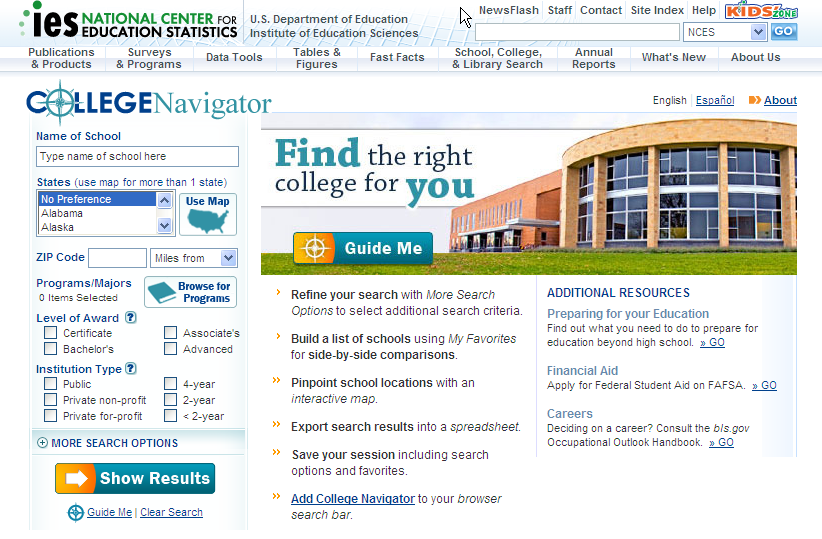
Screen
Shots of the University of California, Berkeley and
Salem
Community College on College Navigator
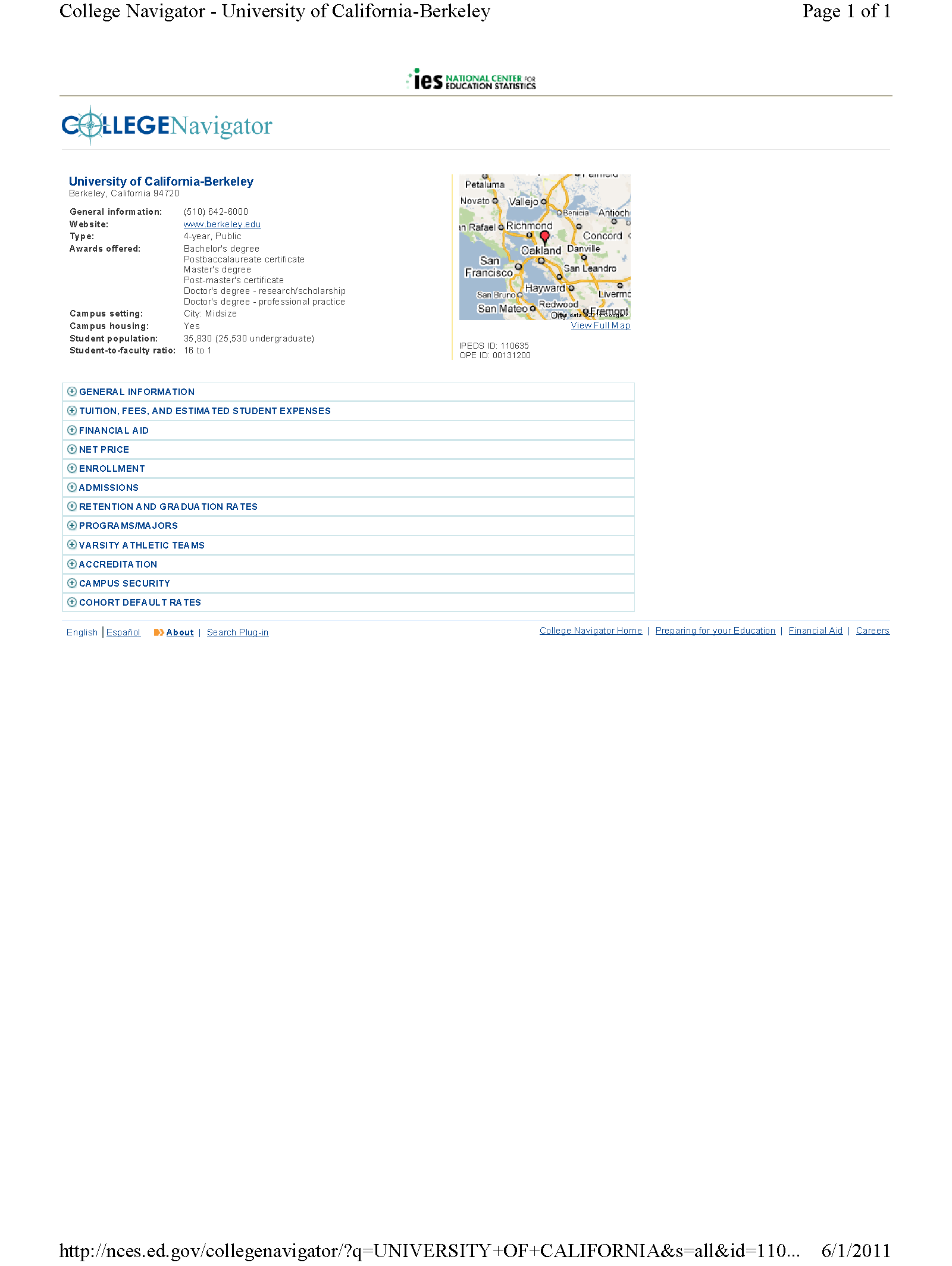
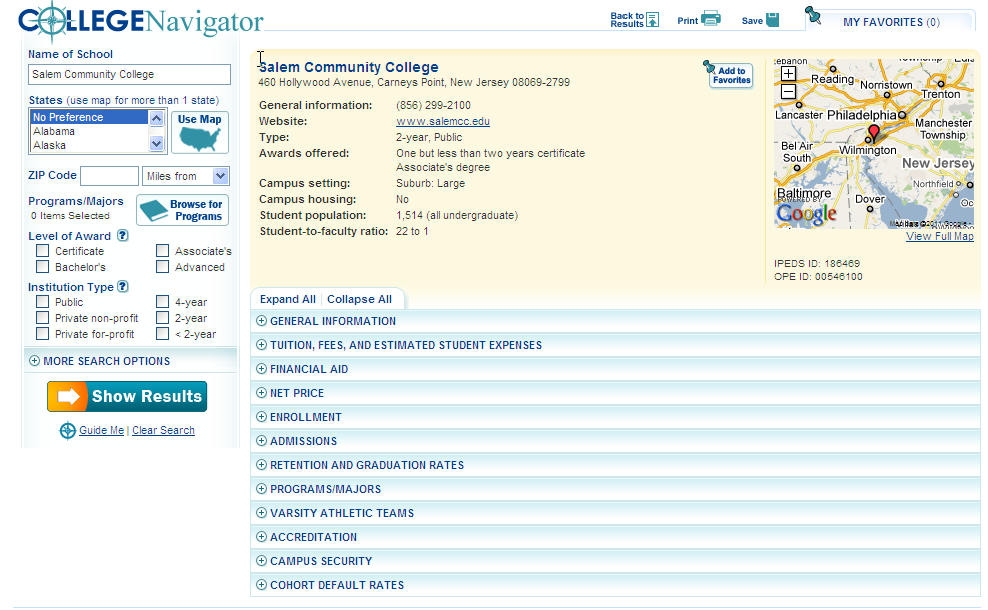
Screen
Shots of NCES College Navigator Profile
University of
California, Berkeley (4-year) and
Salem Community College
(2-year) Example
![]() University
of California-Berkeley
University
of California-Berkeley
www.berkeley.edu
About University of California-Berkeley
The University of California-Berkeley is a 4-year, public institution located in Berkeley, California.
Go to more general information on the institution.
Go to information on this institution’s accreditation.
About
Undergraduate Admissions
About
Student Financial Aid
Go
to more information on
Admissions at this institution.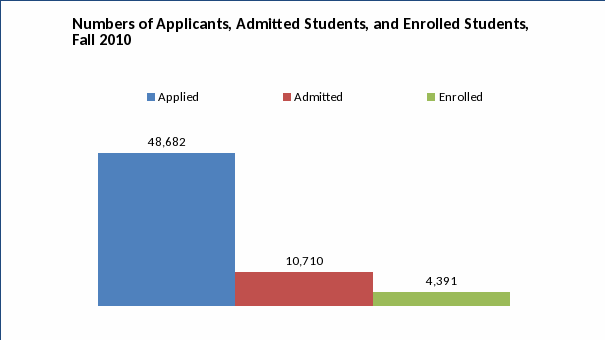
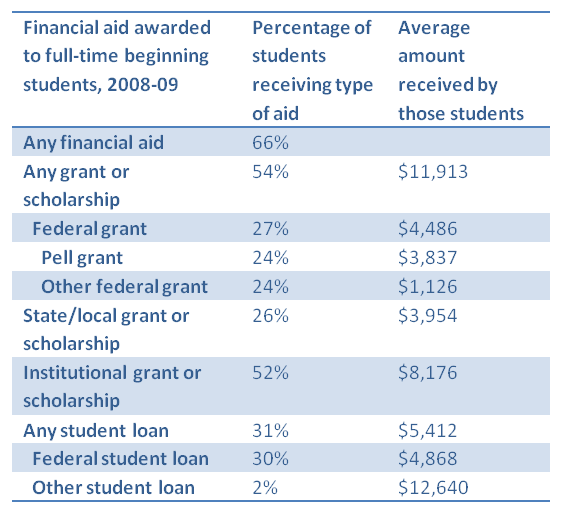
Go
to more information on Student
Financial Aid at this institution.
About the Estimated Student Expenses before and after Grant and Scholarship Aid
Not
reported yet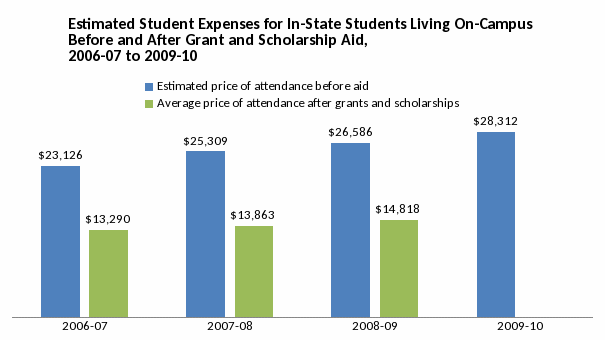
Go
to
more information on Estimated Student Expenses Before Aid at this
institution.
Go
to
more information on Estimated Student Expenses After Aid (Net Price)
at this institution.
About Undergraduate Students
Student-to-Faculty Ratio: 16:1
Number
of undergraduate students: 25,530
Number
of undergraduate students: 25,530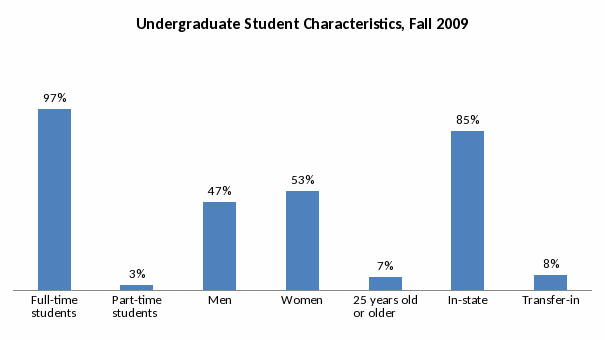
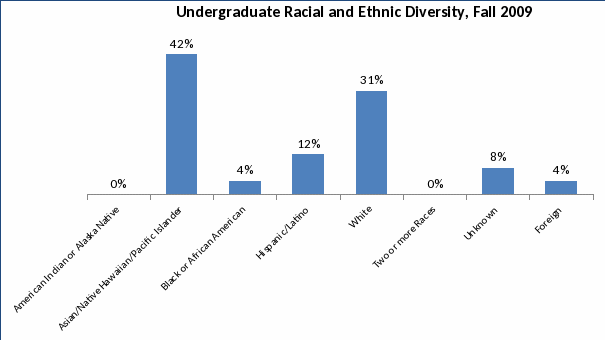
Go
to more information on Student Characteristics at this institution.
Go
to
more information on Student Enrollment at this institution.
About Undergraduate Student Persistence and Success
Go
to more information on Student Persistence and Success at this
institution.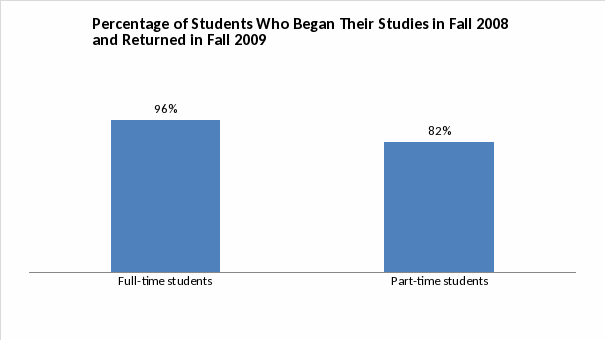
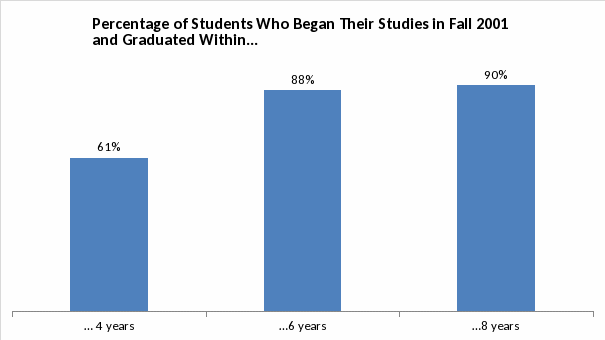
About Degrees and Certificates Awarded to Students
Largest
Areas
of Bachelor’s Degrees in 2009-10 Social
Sciences Engineering Biological
and Biomedical Sciences English
Language and Literature Multi/Interdisciplinary
Studies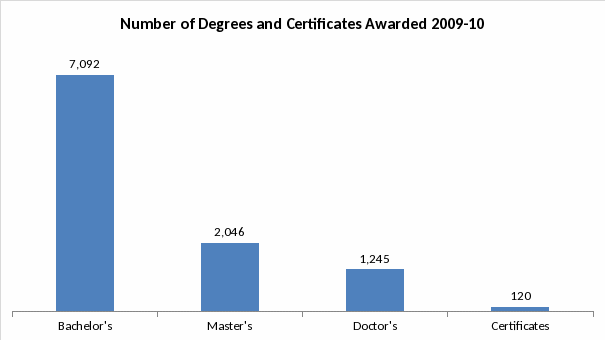
Go
to more information on Degrees and Certificates at this institution.

![]() Salem
Community College
Salem
Community College
www.salemcc.edu
About Salem Community College
Salem Community College is a 2-year, Public institution located in Carneys Point, New Jersey. It has an open admissions policy.
Go to more general information on the institution.
Go to information on this institution’s accreditation.
About
Tuition and Fees
About
Student Financial Aid
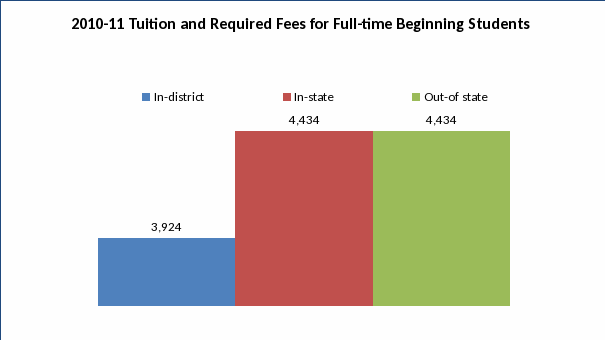
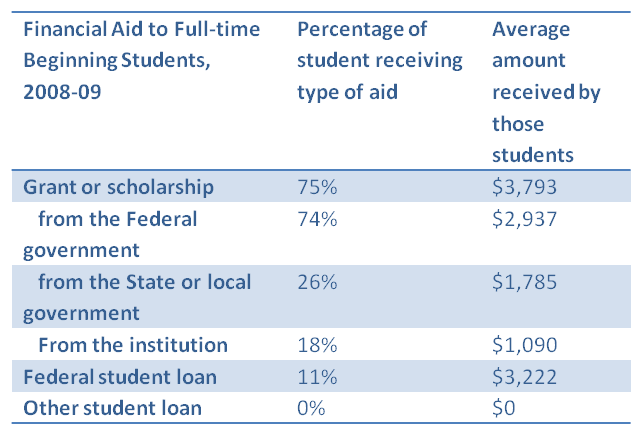
About the Estimated Student Expenses before and after Grant and Scholarship Aid
Not
reported yet
Not
reported
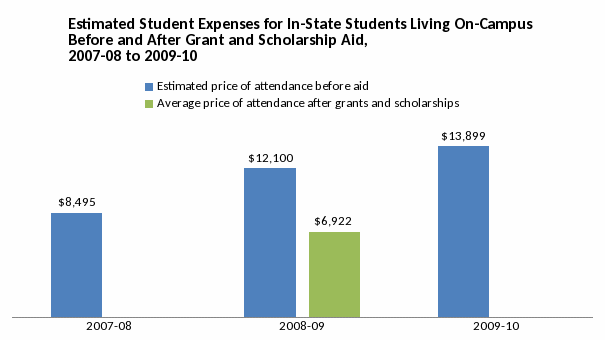
Go
to
more information on Tuition and Fees and Estimated Student Expenses
before Aid.
Go
to
more information on Estimated Student Expenses after Grant and
Scholarship Aid (Net Price).
Go
to more information on Financial Aid.
About Undergraduate Students
Student-to-Faculty Ratio: 22:1
Number
of undergraduate students: 1,541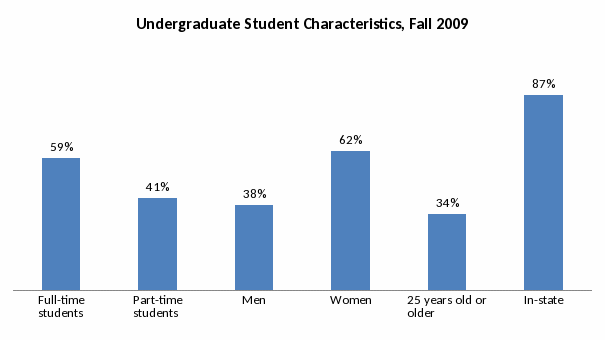
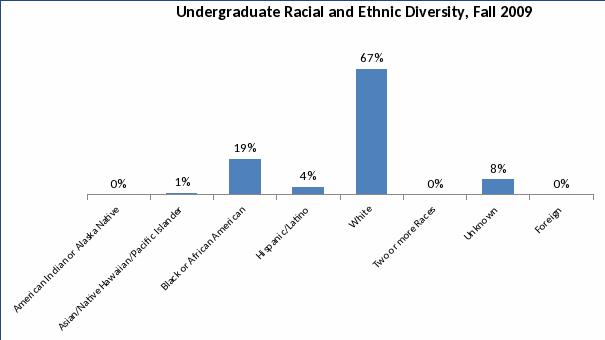
Go
to more information on Student Characteristics at this institution.
Go
to
more information on Student Enrollment at this institution.
About Undergraduate Student Persistence and Success
Go
to more information on Student Persistence and Success at this
institution.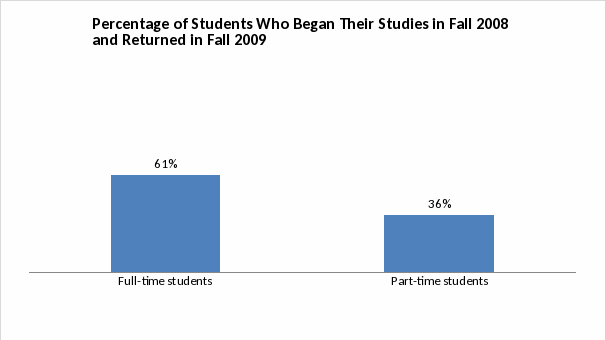
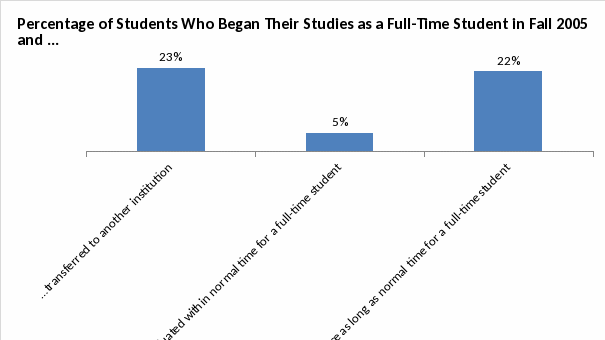
About Degrees and Certificates Awarded to Students
Largest
Areas of Associate’s Degrees in 2009-10 Health
Professions and Related Programs Computer
and Information Sciences and Support Services Business,
Management, Marketing, and Related Support Services Largest
Areas of Certificates in 2009-10 Health
Professions and Related Programs Business,
Management, Marketing, and Related Support
Liberal
Arts and Sciences, General
Studies and Humanities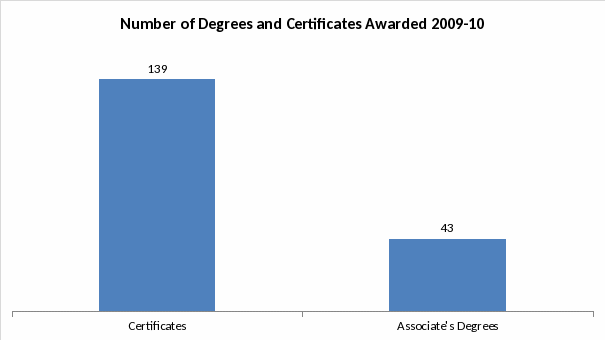
Go
to more information on Degrees and Certificates at this institution.

Screen
Shots of Additional College Navigator Information
(University of
California - Berkeley
and Salem Community College examples)
ABOUT UNDERGRADUATE ADMISSIONS

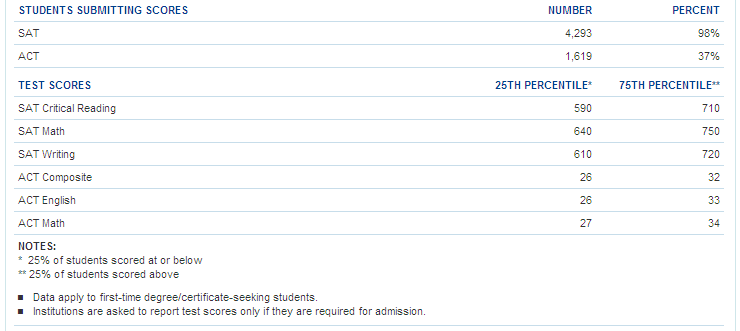

ABOUT FINANCIAL AID

ABOUT THE ESTIMATED STUDENT EXPENSES BEFORE GRANT AND SCHOLARSHIP AID

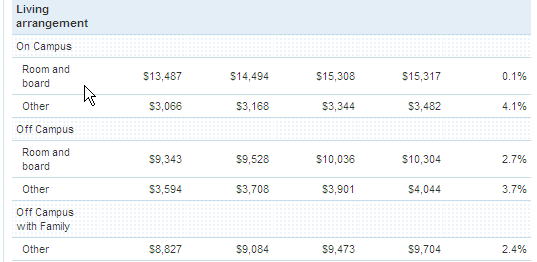

ABOUT THE ESTIMATED STUDENT EXPENSES AFTER GRANT AND SCHOLARSHIP AID

ABOUT TUITION AND FEES

ABOUT FINANCIAL AID
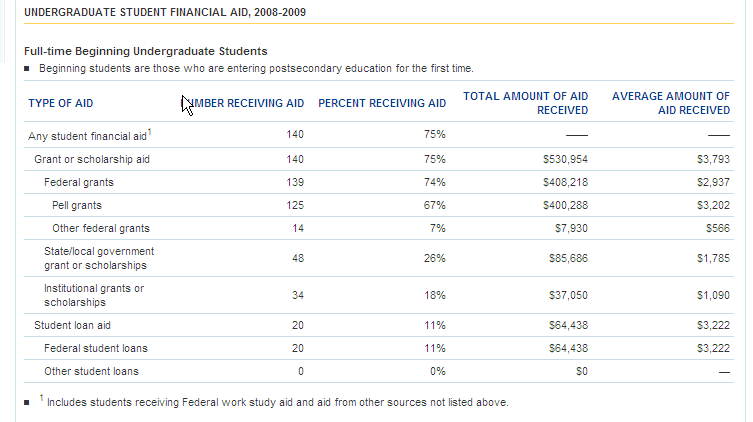
ABOUT THE ESTIMATED STUDENT EXPENSES BEFORE GRANT AND SCHOLARSHIP AID
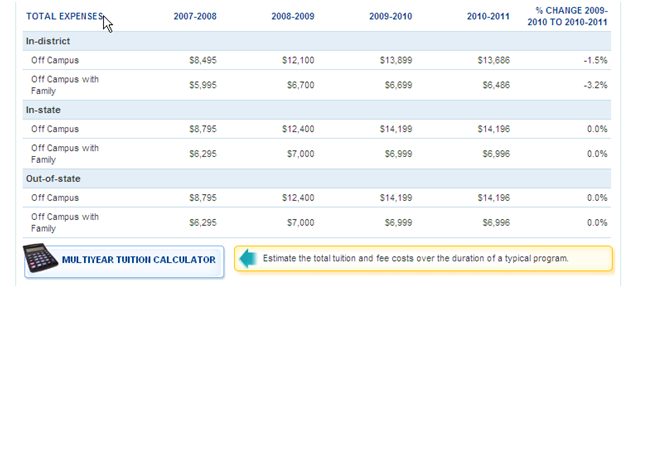
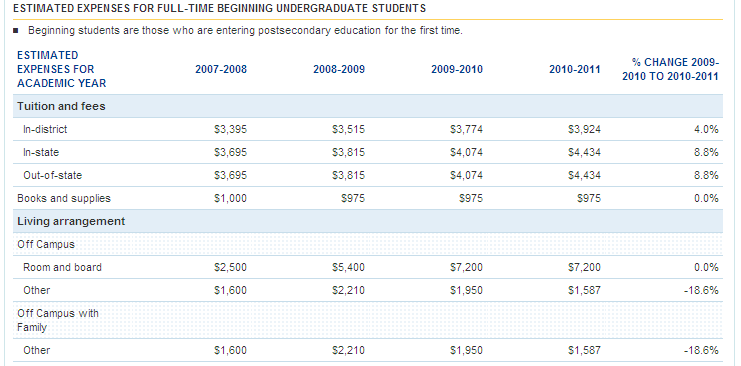
ABOUT THE ESTIMATED STUDENT EXPENSES AFTER GRANT AND SCHOLARSHIP AID
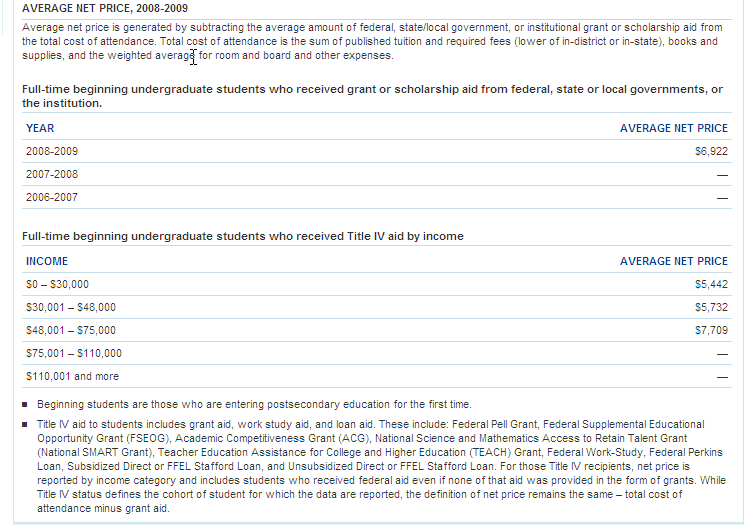
ABOUT UNDERGRADUATE STUDENT PERSISTENCE AND SUCCESS
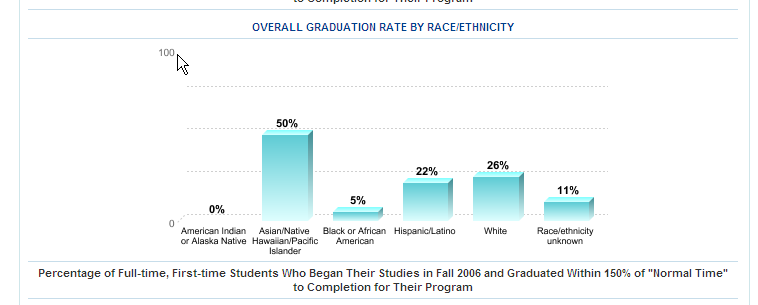

Ranking Forms Within Categories
For
Students Attending 4-year Colleges and
Guidance Counselors and
Students Attending 2-year Colleges
Focus
Group on College Navigator
(4-year
college students and guidance counselors)
Attachment IV
Ranking Sheet Within Categories
Selection of information within each category
Under Information, please put an “X” on the line next to the one piece of information from each category that would/should most affect your/your students’ enrollment decisions. (You should have only 7 items marked with an “X”.)
Category Information
About Undergraduate Admissions |
____*Number of applicants, admitted Students, and enrolled students ____ Acceptance rate, enrollment rate (percentages rather than numbers) ____ SAT/ACT test score ranges for enrolled students ____ Admissions requirements, such as GPA and test scores |
About Financial Aid |
___*Information on total grants/scholarships and loan for beginning (first-year) students ____*Information on specific grants/scholarships and loans ( details on Pell grant, Institutional grants, etc) for beginning (first-year) students ____ Information on grants/scholarships and loans for all undergraduates, not just first-year students |
*Presented in College Profile
About Estimated Student Expenses (Before Grant Aid) |
____*Overall estimated student expenses for in-state students living on campus before grant and scholarship aid ____ Detailed estimated student expenses for students by different living options (on-campus, off-campus) and for in and out-of-state students ____ Detailed estimates of student expenses broken out by type of expenses: tuition and fees, room and board, books and supplies, etc. |
About Estimated Student Expenses (After Grant Aid) [Net Price] |
____*Overall average estimated student expenses after grant aid [net price] ____ Average estimated student expenses after grant aid [net price] for federal aid recipients by income categories
|
About Undergraduate Students |
____*Student Characteristics If you choose Student Characteristics, please rank the following in order of importance on a scale of 1-6 (1 = most important; 6= least important): ___ percentage of women versus men ___ percentage of students who transfer in ___ percentage of full-time versus part-time students ___ percentage of older students ___ percentage of in-state versus out-of-state students ___ percentage of students by their racial and ethnic background
____*Size of student body (undergraduates only) ____*Student-to-faculty ratio
|
About Undergraduate Student Persistence and Success |
____*Percentage of students who began their studies in Fall 2008 and returned in Fall 2009 [first-year retention rate] ___*Percentage of students who began who graduated within four, six or eight years [graduation rates] ___ Graduation rates for different racial/ethnic groups ___ Transfer-out rates
|
About Degrees and Certificates Awarded to Students |
____*Number of degrees and certificates awarded by type of degree (associate’s, bachelor’s, master’s, doctor’s) ____*Top 5 areas for bachelor’s degrees ____ Information about areas of study by gender (women, men) ____ Information about areas of study by race/ethnicity |
*Presented in College Profile
Consumer Information Focus Group on College Navigator
(2-year
college students)
Attachment IV
Ranking Sheet Within Categories
Selection of information within each category
Under Information, please put an “X” on the line next to the one piece of information from each category that would most affect your enrollment decision. (You should have only 7 items marked with an “X”.)
Category Information
About Tuition and Fees |
____*Tuition and required fees for full-time beginning students (in-district, in-state, and out-of-state) ____ Per credit tuition rate for part-time students ____ Alternative tuition plans offered |
About Student Financial Aid |
____*Information on total grants/scholarships and loans for beginning students ____ Information on specific grants/scholarships and loans ( details on Pell grant, institutional grants, etc) for beginning students |
About Estimated Student Expenses (Before Grant Aid] |
____*Overall estimated student expenses for in-state students living on campus before grant and scholarship aid ____ Detailed estimated student expenses for students by different living options (on-campus, off-campus) and for in and out-of-state students ____ Detailed estimates of student expenses broken out by type of expenses: tuition and fees, room and board, books and supplies, etc. |
*Presented in College Profile
About Estimated Student Expenses (After Grant Aid) [Net Price] |
___*Overall average estimated student expenses after grant aid [net price] ___ Average estimated student expenses after grant aid [net price] for federal aid recipients by income categories |
About Undergraduate Students |
____*Student Characteristics If you choose Student Characteristics, please rank the following in order of importance on a scale of 1-5 (1 = most important; 5= least important) ___*percentage of women versus men ___*percentage of full-time versus part-time students ___*percentage of older students ___*percentage of in-state versus out-of-state students ___*percentage of students by their racial and ethnic background
____*Size of student body ____*Student-to-faculty ratio
|
About Undergraduate Student Persistence and Success |
____*Percentage of students who began their studies in Fall 2008 and returned in Fall 2009 [first-year retention rate] ____*Percentage of students who began their studies as a full-time student in Fall 2005 by time to completion [graduation rates] ____ Graduation rates for different racial/ethnic groups ____ Transfer-out rates
|
About Degrees and Certificates Awarded to Students |
____*Number of degrees and certificates awarded by type of award (associate’s degrees. certificates) ____*Top 3 areas for associate’s degrees ____ Top 3 areas for certificates ____ Information about areas of study by gender (women, men) ____ Information about areas of study by race/ethnicity |
*Presented in College Profile
Ranking Forms (Overall)
For
Students Attending 4-year Colleges and
Guidance Counselors and
Students Attending 2-year Colleges
Focus
Group on College Navigator
(4-year
college students and guidance counselors)
Attachment IV
Overall Ranking Sheet
Selection of information within each category
Please rank the six categories of information that would/should most affect your/your student’s enrollment decision. (Sample information provided under each category.) Rank in order of importance to you, 1 through 6, with 1 being the most important and 6 the least. (You should have only 6 items ranked.)
Category (in bold) Rank
About Undergraduate Admissions
|
_____ Rank |
About Financial Aid
|
_____ Rank |
About Estimated Student Expenses Before and After Grant and Scholarship Aid
|
_____ Rank |
About Undergraduate Students
|
_____ Rank
|
About Undergraduate Student Persistence and Success
|
_____ Rank |
About Degrees and Certificates Awarded to Students
|
_____ Rank |
Focus
Group on College Navigator
(2-year
college students)
Attachment IV
Overall Ranking Sheet
Selection of information within each category
Please rank the six categories of information that would/should most affect your/your student’s enrollment decision. (Sample information provided under each category) Rank in order of importance to you, 1 through 6, with 1 being the most important and 6 the least. (You should have only 6 items ranked.)
Category (in bold) Rank
About Tuition and fees
|
_____ Rank |
About Financial Aid
|
_____ Rank |
About Estimated Student Expenses Before and After Grant and Scholarship Aid
|
_____ Rank |
Category |
Rank |
About Undergraduate Students
|
_____ Rank
|
About Undergraduate Student Persistence and Success
|
_____ Rank |
About Degrees and Certificates Awarded to Students
|
_____ Rank |
Attachment V
Assurance of Confidentiality
Consent Form for Parents
Consumer Information College Navigator Focus Group
Participant Informed Consent -Parents
Attachment V
Sample Consent Forms
Westat, a social science research company in Rockville, Maryland, is working with the National Center for Education Statistics (NCES) of the U.S. Department of Education on a research project related to a college information website developed by NCES for use by prospective college students and their families. Westat is conducting focus groups to learn about the type of information students and guidance counselors feel are most important in conducting college searches using this website and in making decisions about which institutions students should apply to and attend.
This focus group has been approved by the Office of Management and Budget (OMB# 1800-0011). Participation in the focus group is important but voluntary. There are no risks for your child to participate in this focus group. The focus group will last about 90 minutes and will be conducted by a trained moderator from Westat; the discussion will be audio recorded. After the focus group is completed, participants will each receive $50 in appreciation for their time.
The information obtained during the focus group, including audio recordings, will be provided to Westat staff working on this project. Additionally, NCES staff will observe the focus group. The information obtained during the focus group will be combined with the responses of others in a summary report that does not identify your child as an individual. Their answers may be used only for statistical purposes and may not be disclosed, or used, in identifiable form for any other purpose except as required by law [Education Sciences Reform Act of 2002 (ESRA 2002) 20 U.S.C., § 9573]. After the report is finalized and the project is completed, the audiotapes will be destroyed.
If you have any questions about this project, you can contact Denise Glover at Westat at 301-251-2269 or [email protected], or Elise Miller at NCES at [email protected].
I have read the above document describing the voluntary nature, response confidentiality, and procedures for this research study.
My son/daughter, __________________________, has my permission to participate in the NCES Consumer Information focus group and my consent to the audio recording of the discussion. I realize, due to space limitations, I will not be able to accompany my child or observe the discussion group in progress. I also understand that my child will be participating on a voluntary basis and that his or her responses will be combined with the responses of others in a summary report that does not identify your child as an individual.
___________________________________
Signature of Parent/Guardian
_________/__________/________
Date
Consent Form for Students
Consumer Information College Navigator Focus Group
Participant Informed Consent –High School Students
Attachment V
Sample Consent Forms
Westat, a social science research company in Rockville, Maryland, is working with the National Center for Education Statistics (NCES) of the U.S. Department of Education on a research project related to a college information website developed by NCES for use by prospective college students and their families. Westat is conducting focus groups to learn about the type of information students, parents, and guidance counselors feel are most important in conducting college searches using this website and in making decisions about which institutions students should apply to and attend.
During the focus group, you will be asked to respond to and discuss questions about the types of information that are most helpful to you in conducting a college search. The information shared in this group will be used to help NCES revise the college information website so that it is more helpful and useful to prospective college students.
This focus group has been approved by the Office of Management and Budget (OMB# 1800-0011). The focus group will last about 90 minutes and will be conducted by a trained moderator from Westat. During this time, the moderator will lead a discussion about the types of information that are most helpful in conducting a college search; the discussion will be audio recorded. After the focus group is completed, you will receive $50 in appreciation for your time.
The information obtained during the focus group, including audio recordings, will be provided to Westat staff working on this project. Additionally, NCES staff will observe the focus group. The information obtained during the focus group will be combined with the responses of others in a summary report that does not identify you as an individual. Your answers may be used only for statistical purposes and may not be disclosed, or used, in identifiable form for any other purpose except as required by law [Education Sciences Reform Act of 2002 (ESRA 2002) 20 U.S.C., § 9573]. After the report is finalized and the project is completed, the audiotapes will be destroyed.
If you have any questions about this project, you can contact Denise Glover at Westat at 301-251-2269 or [email protected], or Elise Miller at NCES at [email protected].
I have read and understand the above document describing the voluntary nature, response confidentiality, and procedures for this research study. I agree to participate.
_________________________________________________
Student Signature
_________/__________/________
Date
Consent Form for Guidance Counselors
Consumer Information College Navigator Focus Group
Participant Informed Consent - Guidance Counselors
Attachment V
Sample Consent Forms
Westat, a social science research company in Rockville, Maryland, is working with the National Center for Education Statistics (NCES) of the U.S. Department of Education on a research project related to a college information website developed by NCES for use by prospective college students and their families. Westat is conducting focus groups to learn about the type of information students, parents, and guidance counselors feel is most important in conducting college searches using this website and in making informed decisions about which institutions students should apply to and attend.
Your participation in the focus group is important but voluntary. If you choose to participate, you can leave the focus group at any time. There are no risks for participating in this focus group. The information shared in this group will be used to help NCES update the college information website so that it is more helpful and useful to prospective college students.
This focus group has been approved by the Office of Management and Budget (OMB# 1800-0011). The focus group will last about 90 minutes and will be conducted by a trained moderator from Westat. During this time, the moderator will lead a discussion about the types of information that are most helpful in conducting a college search; the discussion will be audio recorded. After the focus group is completed, you will receive $75 in appreciation for your time.
The information obtained during the focus group, including audio recordings, will be provided to Westat staff working on this project. Additionally, NCES staff will observe the focus group. The information obtained during the focus group will be combined with the responses of others in a summary report that does not identify you as an individual. Your answers may be used only for statistical purposes and may not be disclosed, or used, in identifiable form for any other purpose except as required by law [Education Sciences Reform Act of 2002 (ESRA 2002) 20 U.S.C., § 9573]. After the report is finalized and the project is completed, the audiotapes will be destroyed.
If you have any questions about this project, contact Denise Glover at Westat at 301-251-2269 or [email protected], or Elise Miller at NCES at [email protected].
I have read the above document describing the voluntary nature, response confidentiality, and procedures for this research study.
I, __________________________ [print name], agree to participate in the NCES Consumer Information focus group and consent to the audio recording of the discussion.
____________________________________________
Participant’s Signature
Date _________/__________/________
Attachment VI
Affidavit of Non-disclosure Forms Signed by Westat Staff
(Job Title) (Date Assigned to Work with NCES Data)
(Organization, State or Local Agency Name)
(Organization or Agency Address) (NCES Database or File Containing Individually Identifiable Information*)
I, ____________________, do solemnly swear (or affirm) that when given access to the subject NCES database or file, I will not
(i) use or reveal any individually identifiable information furnished, acquired, retrieved or assembled by me or others, under the provisions of Section 183 of the Education Sciences Reform Act of 2002 (P.L. 107-279) and Title V, subtitle A ofthe E-Government Act of 2002 (P.L. 107-347) for any purpose other than statistical purposes specified in the NCES survey, project or contract;
(ii) make any disclosure or publication whereby a sample unit or survey respondent (including students and schools) could be identified or the data furnished by or related to any particular person or school under these sections could be identified; or
(iii) permit anyone other than the individuals authorized by the Commissioner ofthe National Center for Education Statistics to examine the individual reports.
(Signature)
[The penalty for unlawful disclosure is a fine of not more than $250,000 (under 18 U.S.C. 3571) or imprisonment for not more than five years (under 18 U.S.C. 3559), or both. The word "swear" should be stricken out when a person elects to affirm the affidavit rather than to swear to it.]
City/County of Commonwealth/State of _
Swom to and subscribed before me this day of
______, 20 . Witness my hand and official Seal.
(Notary Public/Seal) My commission expires. _
* Request all subsequent follow-up data that may be needed. This form cannot be amended by NCES, so access to databases not listed will require submitting additional notarized Affidavits.
Form last revised 02/08/07
| File Type | application/vnd.openxmlformats-officedocument.wordprocessingml.document |
| File Title | Sample Student Recruitment Flyer |
| Author | mcominole |
| File Modified | 0000-00-00 |
| File Created | 2021-02-04 |
© 2026 OMB.report | Privacy Policy